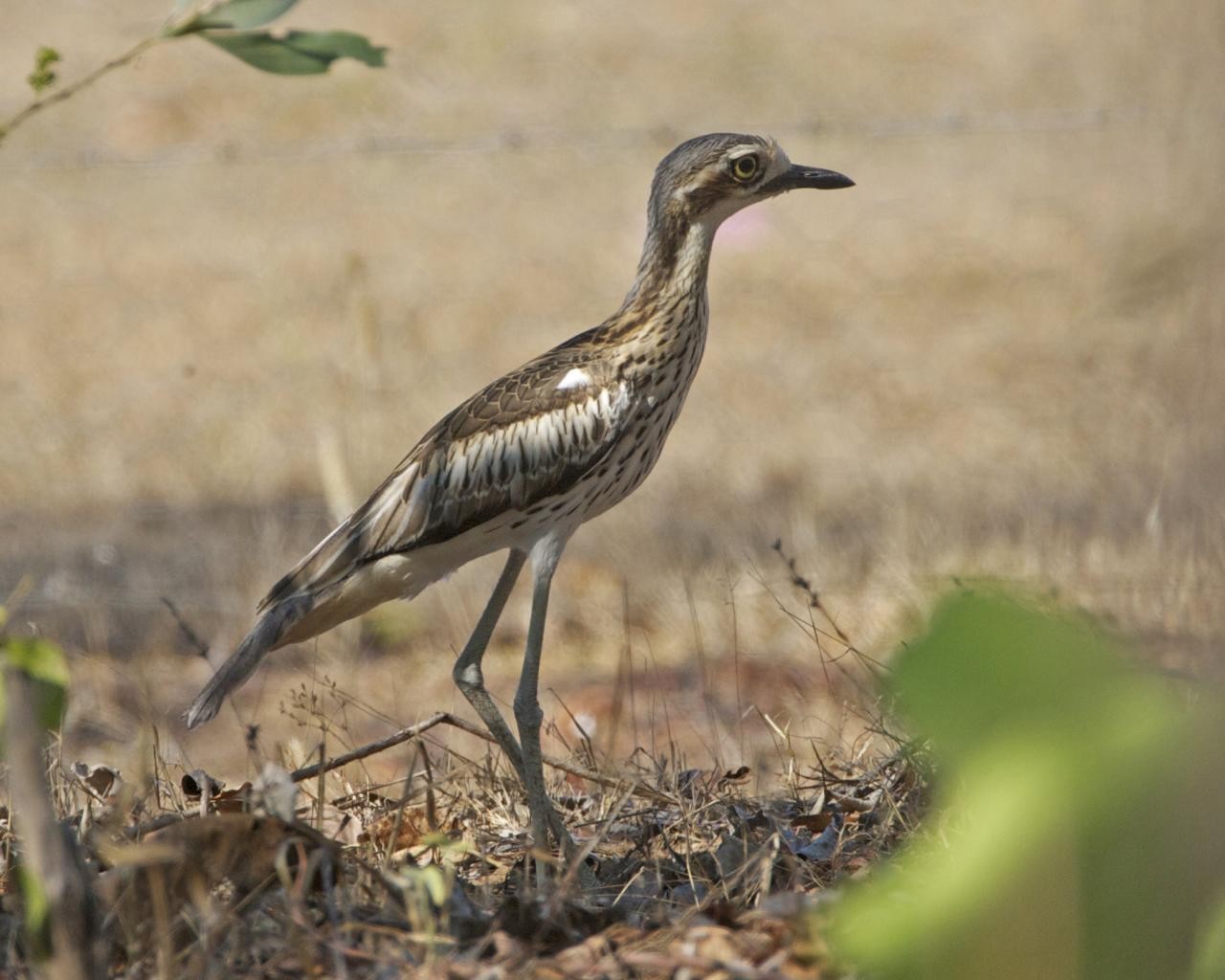Bush Stone-curlew
A species of Typical Thick-knees Scientific name : Burhinus grallarius Genus : Typical Thick-knees
Bush Stone-curlew, A species of Typical Thick-knees
Botanical name: Burhinus grallarius
Genus: Typical Thick-knees
Content
Description People often ask General Info
 Photo By Lip Kee , used under CC-BY-SA-2.0 /Cropped and compressed from original
Photo By Lip Kee , used under CC-BY-SA-2.0 /Cropped and compressed from original Description
The bush Stone-curlew is a tall, slim, nocturnal bird. At night, it gives off an eerie wail, which is its contact call, and sometimes a chorus of these birds can be heard in the midnight hours wailing like ghosts. During courtship, the birds stomp their feet in a marching beat that makes them look like soldiers
Size
59 cm
Life Expectancy
20-30 years
Nest Placement
Ground
Feeding Habits
Bush Stone-curlew primarily consumes insects, mollusks, small lizards, and mammals, occasionally eating seeds. Its nocturnal hunting involves stealthy foraging. Bush Stone-curlew boasts unique adaptations for catching elusive prey.
Habitat
Bush Stone-curlew resides in open habitats, including eucalyptus woodlands and grassy plains, often with dead timber or leaf litter, while avoiding exceedingly dense vegetation and severe desert aridity. These birds occupy temperate and tropical regions, particularly around inland watercourses and adjacent to agricultural fields. Their habitat preferences lead to local movements in response to changing weather, without long-distance migration.
Dite type
Omnivorous
People often ask
General Info
Feeding Habits
Bird food type
Behavior
Like other ground nesting birds, the females only selects a site to lay the eggs and provides no other adornment to the nest; care of the site is performed by both parents. The brooding parent will discreetly move from the site if disturbed in the first few days of incubation, but remains to defend an egg at a later stage of development. The parent will adopt its frozen posture and lay over the eggs in an attempt to hide them. 
Distribution Area
It is a common species near the cities of Brisbane, Cairns and Townsville of Australia northeast, but is not found around urban areas in the south of its range. It can be found throughout Australia apart from the West Australian coast and Tasmania. It is still abundant in the tropical and sub-tropical north, but has become very rare in the less fertile south where it was once common. 
Species Status
The assessment noted in the IUCN Red List is not threatened, revising an earlier listing of near threatened with extinction. The population is declining and estimated at 10,000 to 15,000 individuals in 2016. Historical declines recorded during colonisation of Australia are thought to have abated in the thirty two years (three generations) prior to the IUCN's 2016 assessment. 
Scientific Classification
Phylum
Chordates Class
Birds Order
Shorebirds Family
Stone-curlews Genus
Typical Thick-knees Species
Bush Stone-curlew